Contents
How to Use MLO?
Both STA and AP need to support WiFi 7 and MLO. Please note that MLO does not require the 6GHz band. Some WiFi 7 routers may only support one 2.4GHz band and one or two 5GHz bands. MLO allows your device to connect to all WiFi bands simultaneously.
Main Benefits of MLO:
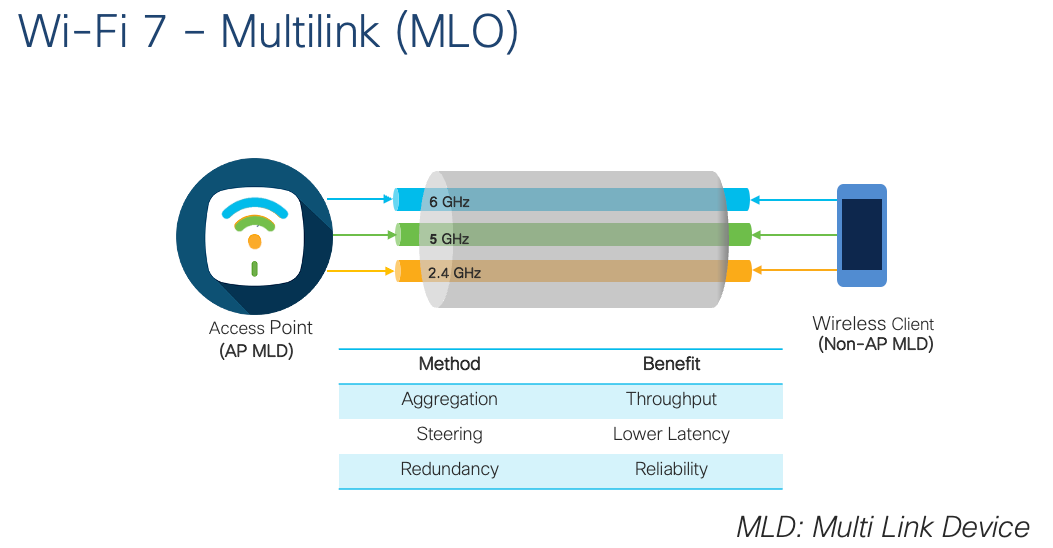
-
Aggregation: AP and client can now use multiple links to exchange data. This helps improve throughput and benefits applications like HD video conferencing.
-
Steering: Multi-link also aims to dynamically guide clients to exchange data in links, achieving better SLA for certain traffic. If there are applications that require strict SLA, it can dynamically switch links based on channel conditions that the AP and client believe can achieve SLA. An example here is AR/VR applications.
-
Redundancy: Access points and clients can send the same data on multiple links. If one link experiences packet loss due to corruption, the duplicate data on another link can be used. This helps improve reliability. An example application here is remote surgery, where the application cannot afford any data loss due to its critical nature.
In the initial phase, the main benefit that end users will get is the aggregation function with higher throughput.
Devices capable of performing multi-link operations are called multi-link devices or MLD. Access points are called AP MLD, and clients are called Non AP MLD.
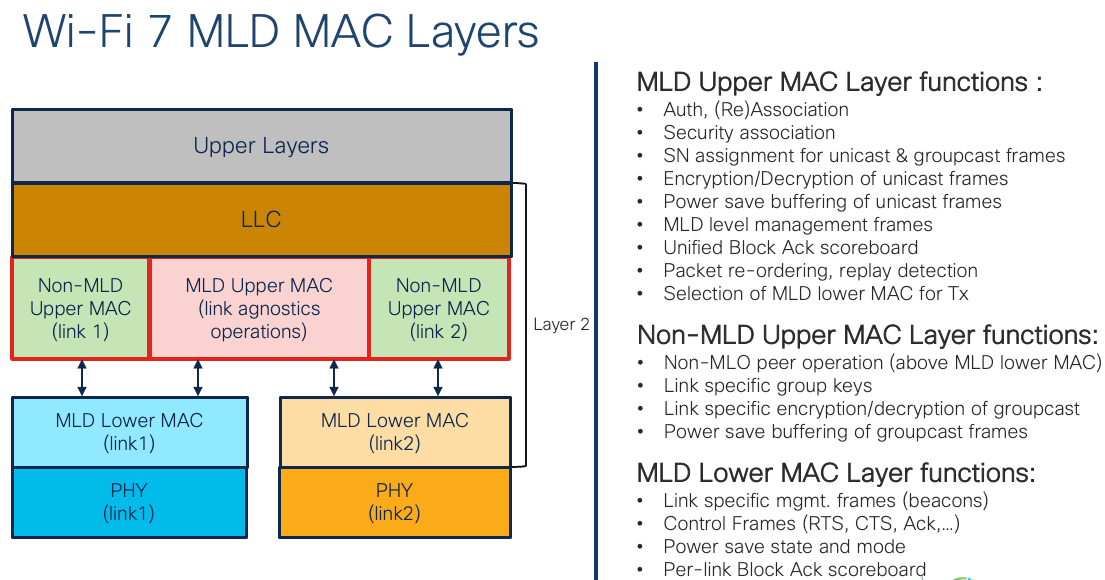
The MAC layer is divided into two parts: upper MAC - logical MAC layer and lower MAC - physical layer bound to individual radios.
Each layer has specific functions:
-
Link-specific operations for certain management functions (such as beacons, probes, RTS/CTS control frames and acknowledgment frames) are handled by the lower MAC.
-
Link-independent operations for management functions such as association, reassociation, security, encryption and decryption of unicast data frames are handled by the upper MAC.
MLO Operating Modes
| MLO Mode | Required Radios | Attributes |
|---|---|---|
| Multi-Link Single Radio (MLSR) | 1 | Only one link can operate at a time, while other links are in power-saving mode. |
| Enhanced Multi-Link Single Radio (EMLSR) | 1 | MLSR with link monitoring and channel access across multiple bands. For example, a STA with 2x2 radio operates in 1x1 mode on each band for listening. |
| Simultaneous Tx and Rx (STR) | >= 2 | Simultaneous Tx, Rx, or Tx+Rx on multiple links without any synchronization. |
| Non-Simultaneous Tx and Rx (NSTR) | >= 2 | Simultaneous Tx or Rx on multiple links, with radio synchronization to end transmissions simultaneously. |
| Enhanced Multi-Link Multi-Radio (EMLMR) | >= 2 | MLMR (STR) with enhanced capabilities to dynamically adjust spatial multiplexing support on each link. |
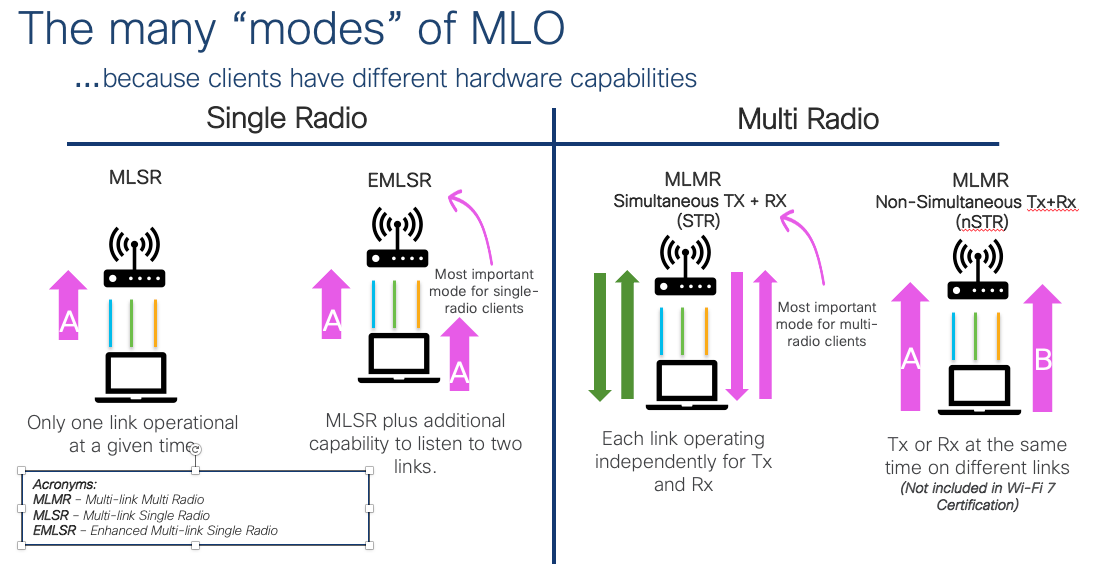
MLMR Multi-Link Multi-Radio
The client has multiple radios and operates on multiple bands or links to communicate with the access point simultaneously.
- There are two sub-methods in MLMR
MLMR-STR Multi-Link Multi-Radio, Simultaneous Tx and Rx
STR allows devices to send and receive data simultaneously on different bands. This feature significantly improves data flow and reduces latency, making it ideal for applications that require real-time data transmission, such as online gaming and video conferencing.
- Think of it as a two-lane highway where cars (data packets) can travel in both directions simultaneously, rather than waiting for one lane to clear before proceeding.

MLMR-nSTR (Multi-Link Multi-Radio, Non-Simultaneous Tx and Rx)
nSTR is a mode where devices send and receive on different bands but not simultaneously. While it cannot provide the same level of efficiency as STR, it still improves data transmission compared to single-link operation by utilizing different bands to send and receive data.
- Think of a single-lane bridge where traffic moves in one direction at a time, but still allows efficient passage through alternating flow.
MLSR Multi-Link Single Radio
Clients establish multi-link connections, but they have only one radio and communicate with the access point through only one link at a given time. They can switch links at any time, but they use one link to exchange data at any given moment.
EMLSR
The client uses one radio chain to listen to one band. Today, most clients are 2x2 radio chains with 2 spatial streams. For example, it uses one radio chain to listen to the 5GHz band and one radio chain to listen to the 6GHz band. Based on the transmission opportunities available in the band, it dynamically switches all radio chains to that band, sends and receives data, and after completion, one radio chain on each band returns to listening mode.

Summary of Different MLO Modes:
The table below summarizes the different MLO modes. In all modes, most client vendors either implement EMLSR or MLMR-STR. MLMR-nSTR and EMLMR modes have high implementation complexity and are not adopted in Wi-Fi 7.
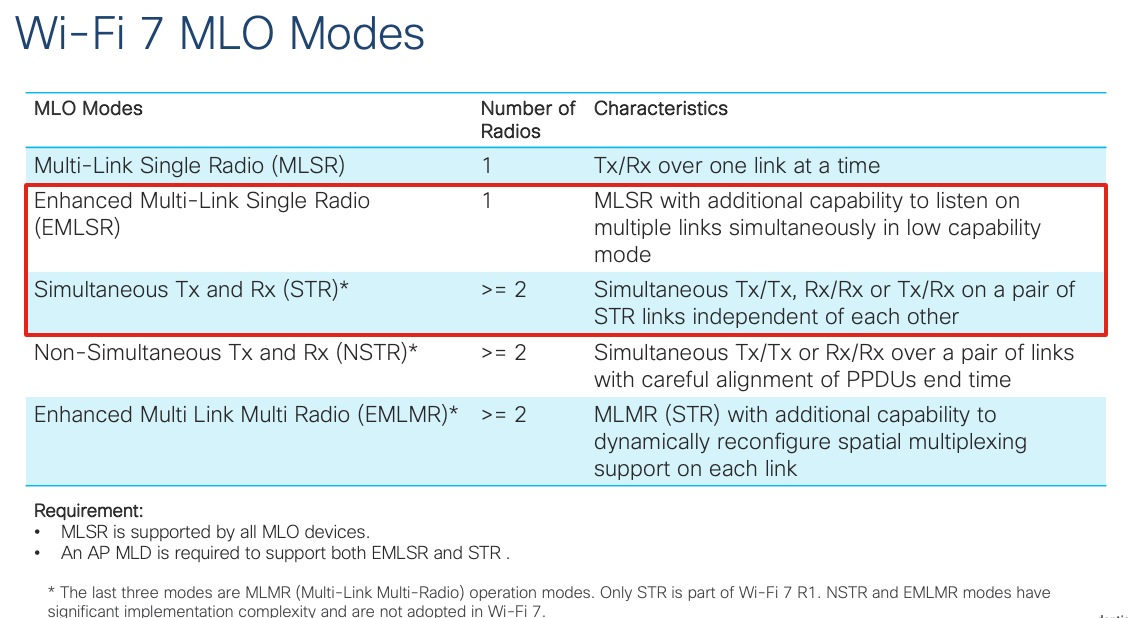
The main advantages of MLSR or EMLSR are:
-
Lower power consumption,
-
Lower cost, but compared to MLMR-STR, the disadvantage is lower throughput, where in MLMR-STR, the client uses two radios to simultaneously transmit and/or receive data.
Technical Features
The main technical features of MLO can be divided into two aspects—packet-level features and flow-level features. Packet-level aggregation improves latency and peak performance, while flow-level routing optimization improves latency and overall throughput.
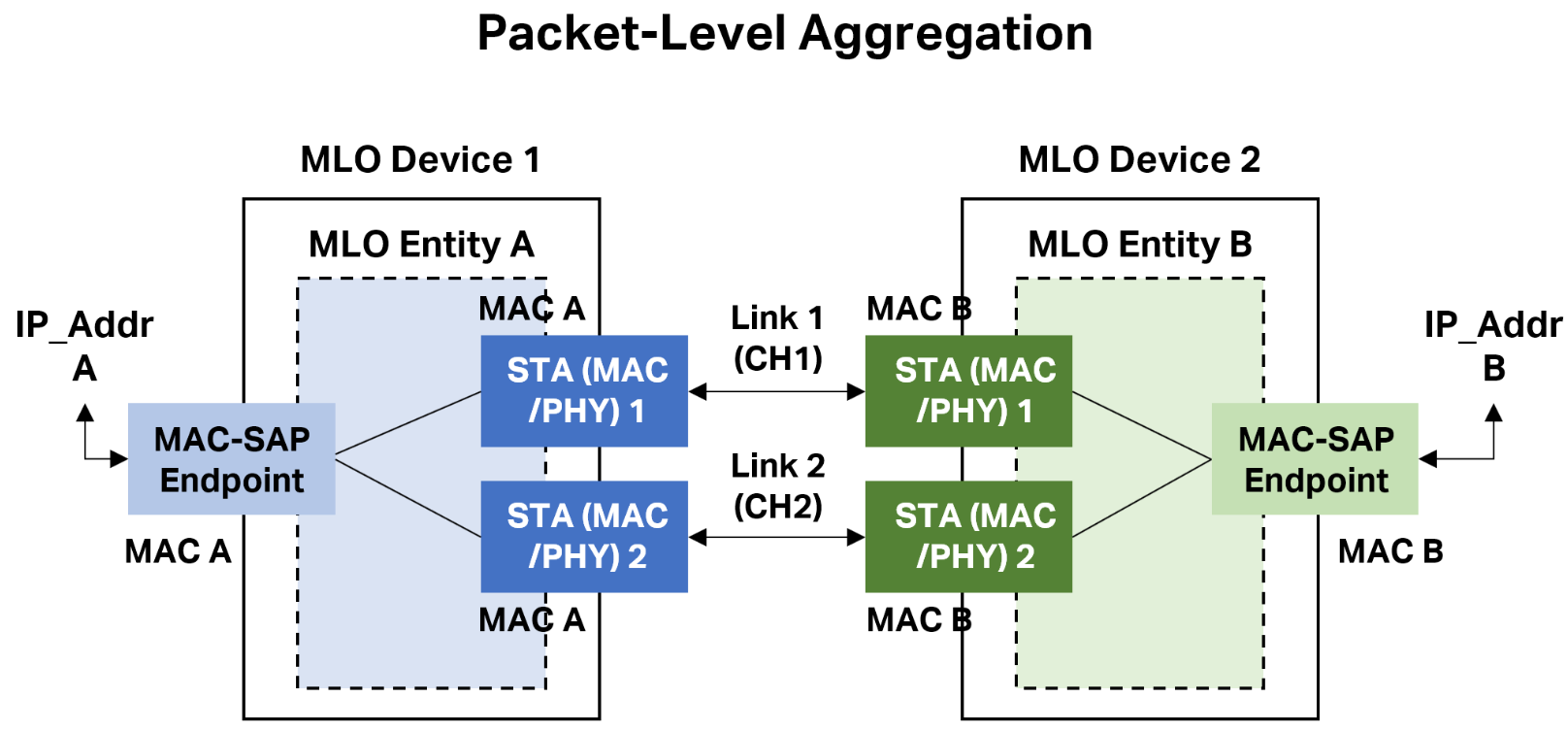

Main Features:
Packet-Level Aggregation
- Packets with the same TID (Traffic Identifier) can be sent on one or more radios
- Helps improve low latency and peak throughput
Cross-Wake Signaling for Power Saving
- AP indicates buffered units on the link that the STA is monitoring
- STA can use another link to indicate wake-up of the link
- STA can monitor one link in idle mode to receive BSS/TIM information of other links
Fast Link Switching
- Active links can be dynamically switched to adapt to load/coexistence conditions
- Beneficial for 11be single-radio STA
Multi-Primary Channel Access
- Required for improved latency
Single Session Shared Across Links**
- One BA (Block Acknowledgment) session per TID, shared sequence number space
- Single authentication and key derivation for unicast data packets
- Separate group keys for broadcast/multicast data packets
